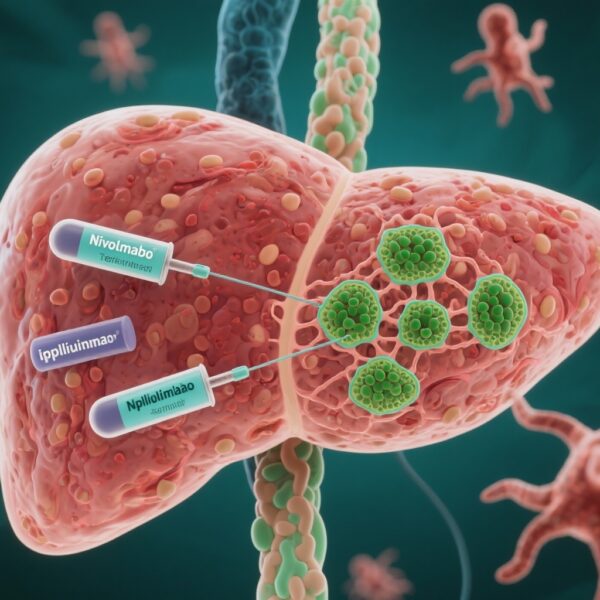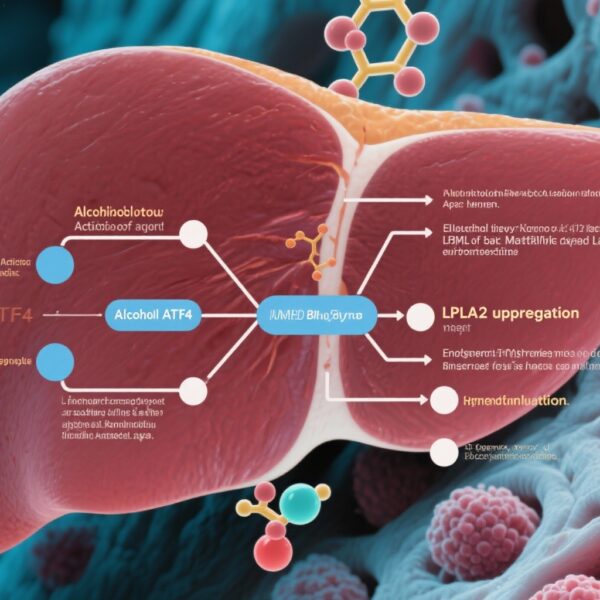Highlight
This large national cohort study from Denmark reveals that individuals undergoing outpatient treatment for alcohol use disorder (AUD) face a high 10-year risk of alcohol-related liver disease (ALD) and significantly increased cause-specific mortality risks, especially among those with comorbid type 2 diabetes. Key findings emphasize a 7.1% 10-year ALD incidence overall and 13% in diabetic patients, alongside a fourfold higher mortality than the matched general population.
Study Background
Alcohol use disorder remains a major public health concern globally, contributing significantly to morbidity and mortality. Among its most severe complications is alcohol-related liver disease, a leading cause of liver failure and death. Early detection of ALD in patients with AUD is essential to mitigate progression and improve outcomes. Despite recommendations for routine screening, the absolute risk of ALD and cause-specific mortality in treated AUD populations relative to the general population has been insufficiently characterized. Furthermore, coexisting metabolic conditions like type 2 diabetes may exacerbate liver-related risks, but detailed risk quantification in these subgroups has been limited.
Study Design
This retrospective cohort study utilized comprehensive nationwide healthcare registries in Denmark from 2006 to 2022. The investigators identified 47,806 individuals engaged in outpatient treatment for AUD. Each subject was matched by age and sex to 10 comparators from the general population (totaling 477,850 individuals). The cohort was followed longitudinally for hospital diagnoses related to ALD, cancer, cardiovascular disease, and for cause-specific mortality. Competing risk analyses accounted for mortality as a competing event to assess cumulative incidence of diagnosed ALD and cause-specific deaths over 10 years.
Key Findings
Baseline Characteristics: The median age of the AUD cohort was 46 years, with a predominance of males (71%). Over half (52%) reported consumption of 20 or more alcohol units per week, and 2.6% had diagnosed type 2 diabetes.
Risk of Alcohol-Related Liver Disease: The cumulative incidence of ALD at 10 years in the AUD cohort was 7.1% (95% CI 6.9%-7.4%), markedly higher than the 0.6% observed in the matched general population group. Within the AUD population, individuals with type 2 diabetes exhibited a 13% absolute 10-year risk of ALD, indicating more than a twofold increased risk compared to those without diabetes.
Mortality Outcomes: The AUD cohort showed a fourfold increase in all-cause mortality at 10 years (17.8% vs 4.5% in comparators). Cause-specific mortality due to ALD was also substantially elevated (2.1% vs 0.2%). Notably, approximately 50% of excess deaths in the AUD cohort were related to alcohol or external causes such as accidents or violence.
Risk of Cancer and Cardiovascular Death: While the incidence of cancer and cardiovascular disease was more similar between groups, individuals in the AUD treatment group had a two to three times higher risk of death from these causes, suggesting worse prognosis and potentially less effective management in the AUD population.
Expert Commentary
This comprehensive nationwide study confirms that individuals treated for AUD bear a significant burden not only of liver-related disease but also of elevated mortality from diverse causes. The data underscore the critical importance of systematic screening for ALD in this high-risk population. The synergistic effect of type 2 diabetes with alcohol use in increasing ALD risk aligns with pathophysiological insights about metabolic stress exacerbating liver injury. Clinicians should maintain vigilance for liver disease in diabetic patients who consume alcohol heavily.
Limitations include the observational nature of registry data, potential under-recording of alcohol consumption, and lack of detailed information on treatment adherence or lifestyle factors. Nonetheless, the large sample size and representative national setting provide robust and generalizable evidence.
Conclusion
The study highlights a pressing need to improve care models for patients with AUD, integrating rigorous ALD screening and management, especially in those with comorbid type 2 diabetes. Early identification and intervention may reduce substantial morbidity and mortality associated with ALD and other alcohol-related complications. Moreover, focused strategies to address the increased mortality from cancer and cardiovascular disease in this population are warranted.
These findings support guideline recommendations for close monitoring of liver health and comprehensive cardiovascular and oncologic risk assessment in patients undergoing treatment for AUD. Future research should explore targeted interventions to mitigate these risks and improve long-term outcomes.
Funding and Trial Registration
This study was conducted using public health registry data supported by Danish health authorities. No clinical trial registration was applicable.
References
Molzen L, Winther-Jensen M, Madsen LG, Osler M, Jepsen P, Askgaard G. Risk of alcohol-related liver disease and cause-specific mortality in individuals seeking treatment for alcohol use disorder. J Hepatol. 2025 Oct 4:S0168-8278(25)02459-6. doi: 10.1016/j.jhep.2025.08.023 IF: 33.0 Q1 . Epub ahead of print. PMID: 40889578 IF: 33.0 Q1 .



